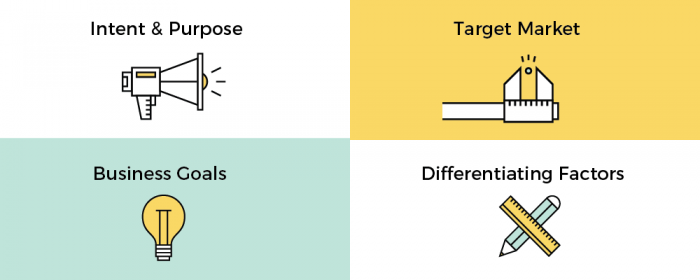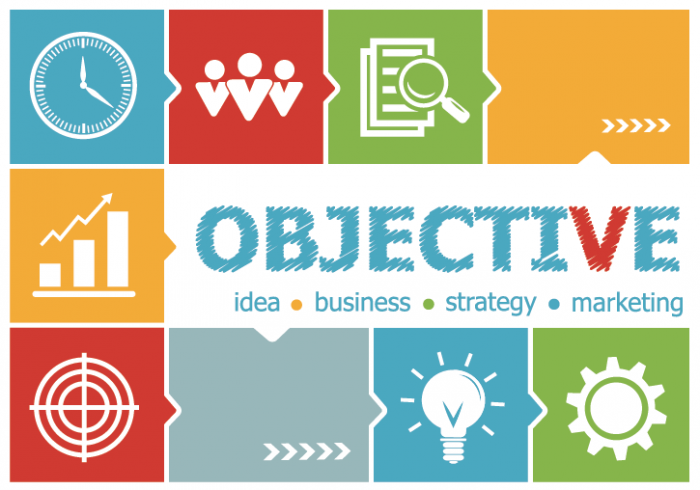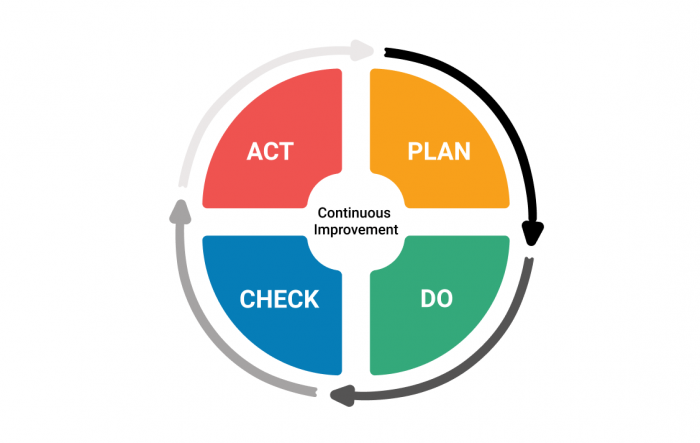Trying to create a product without a vision for what it should be and what it can provide to people is a confusing and difficult process.
A product vision is a long-term goal you are aiming for — The reason(s) for creating a product, the consumer end, and the overall purpose. It is more or less the essence of your product described from an overarching perspective.
Moreover, specifically within Scrum Teams, vision statements play an important role throughout the development process.
That is why we have curated this guide on product vision statements so that you can benefit from this document.
But before we get into the details, it is important to understand what constitutes a vision statement.
What is the Significance of a Product Vision Statement?
As mentioned earlier, “A product vision is the long-term goal you are aiming for — The reason(s) for creating a product, the consumer end, and the overall purpose. It is more or less the essence of your product described from an overarching perspective.”
This statement provides an overview of where the product aims to go, as well as what it hopes to achieve in the long term.
With this statement, you should be able to answer the question of why you are creating this product. To that end, it should also be able to elucidate the hopes your company has of the product in the future.
Create your statement as a guide for all stakeholders involved in the product’s development.
Importance of a Product Vision for Agile Companies

Well, now you know what a product vision is, the question becomes why is it important?
Think about it, without this statement how would you know which features to prioritize, where to focus your resources, and on what basis would you make decisions and set priorities?
Below are some of the reasons why such a statement is important:
- It helps in the development of a product roadmap– creating a statement for your vision should be the beginning of any product journey. You start with the statement of your vision, convert that vision into a strategic guide and action plan, or in other words the product roadmap.
- Helps to align teams and stakeholders– once there is a clear understanding of the high-level goal your product development is working towards, the shared vision can help everyone stay on track and remind them why they are doing what they are doing.
- Throughout the development process strategic decision making is improved– having the vision outlined clearly can help to make decisions throughout the project development process easier. Decisions are driven by identifying initiatives that are worth pursuing and aligned with the vision of your product.
Components of Modern-Day ‘Product Vision’

There are certain elements that you should make sure are present in your vision statement that ensures it is skillfully articulated and well thought out.
These components include:
1. Intent and Purpose
A vision should answer the why of a product, specifically why are you creating the product and what it will provide to your customers.
2. Target Market
Highlight who the product is targeted at, who are the customers or market segment that the product is being created for?
3. Goals of your Business
Establish how the vision of the product is aligning with those of the organization’s strategy and goals. Your vision for your product should align with your organization’s product portfolio.
4. Differentiating Factors
Highlight the unique features of the product you are proposing. Identify how these set you apart from your competitors in the market.
How to Create Your Product Vision?
We are now going to move on to how to create your product vision because that’s what you’re probably wondering now.
We have broken down the process into 4 steps giving you a basic outline of how to create a vision for your product. your product’s vision.
Moreover, since we will be talking about product visions specific to Scrum teams, we’ll outline and focus on the process with an Agile management framework.
Let’s get to it.
Step #1: Developing the Product Objective

To understand the vision of your product and where you wish to see it when launched, it is important to understand the objective behind its creation.
When considering the project objective, you need to identify the following:
1. Main Product Goals
Remember how, when talking about the components of this type of statement, we included goals for your business? Well, this is how you will incorporate this into your vision statement.
It is important when creating a vision statement to highlight what the product goals are and which of your organization’s strategies and aims it aligns with.
2. Customers That You are Targeting
Keep your target market in mind when creating a product. A simple demographics analysis helps a lot. Focus on the needs vs wants factors to see where your product fits in.
3. The need for the Product
You should also understand which of a customer’s needs are you fulfilling by creating the product. Highlight your product’s features that are reportedly essential to the customer that you are targeting your product towards.
4. Product’s Competition
When developing a product’s objective, keep the competitors in mind. For instance, how will your product compare to counterparts in the market?
5. Primary Differentiation
Following on from competitors, a product objective should highlight what makes your product different. Is there a differentiation between its competitors that warrants its creation?
Step #2: Creating a Draft Vision Statement

Once you are clear on the project’s object it is time to make a draft of what your vision statement will be.
As mentioned, a vision statement should highlight the state of your product in the future, when it reaches completion.
The vision statement should also focus on the situation and conditions that need to exist when the product reaches its completion.
Your vision statement should also express your product’s maintenance needs, durability, and quality.
When drafting your vision statement make sure that you avoid generalized statements but also make sure that you do not include too many technological specifications. Doing so may limit the product’s development in the future.
Step #3: Verifying and Revising the Vision Statement

After drafting your vision statement, it is important to do a quality check. One way of doing so is to follow the PDCA technique, which is stands for Plan-Do-Check-Act.
- Plan– Develop the hypothesis
- Do– Validate the hypothesis
- Check– Review the results
- Act– Fix hypothesis and validate again
Certain things to consider when verifying your vision statement are:
- Have you included a convincing description of how your product will meet targeting customer’s needs?
- Is your vision statement clear, concise, and addressing internal audiences?
- Is your vision statement compelling?
- Does your vision statement convey the best outcome possible?
- Does your vision align with your organization’s strategies and goals?
- Is the product objective specific enough that the goal is achievable?
Make sure that your vision statement is thorough. If it isn’t thorough, your project will eventually experience road bumps after the post-release phase.
After you have ensured that your vision statement is thorough and you are satisfied with your draft, it is time to review your statement with others.
Some of the people you should review your vision statement with are:
1. The Development Team
Your development team are the ones who will be working on the product; therefore it is essential that they properly understand the vision for the product so that they can work according to it.
2. Stakeholders
Other than the development team it is important to review your vision statement with the relevant stakeholders. Stakeholders will be able to recognize that the vision statement includes everything the product should aim for.
3. Agile Mentor(s)
If your organization has an agile mentor you can benefit from sharing your vision statement with them for revision. Since agile mentors are usually independent members of your organization, they can provide an external perspective and thus provide an objective view of your vision statement.
4. Scrum Master(s)
By having a clear understanding of your product, a scrum master can remove any potential roadblocks and make sure that the development team is on track with the progress of the product.
Note that if at this point in your product lifecycle there is a chance you will not have a development team or scrum master, therefore, whenever you form your scrum team ensure that you review your vision statement with them.
Step #4: Concluding your Vision Statement
You need to make sure that once you have finalized your vision statement it is available to all the relevant people. This is essential as throughout the life of the product development you should make sure to constantly refer back to your vision statement.
Depending on the length of your project and how long product development takes you may want to go back and revise the vision statement you created to ensure it is relevant and accurate. It should also continue to reflect the market and any changes in your organization’s needs.
Product Vision Within Scrum Teams
Ken Schwaber stated that “The minimum plan necessary to start Scrum project consists of a vision and a product backlog”.
Therefore, we have included in our guide on vision statements, the significance in Scrum teams.
Scrum teams need to be aware of why they are building something, for whom and, for what. In other words, Scrum teams need to know the larger picture and purpose behind the everyday work they are doing.
Scrum teams use product backlogs, and during backlog grooming sessions, as a product owner, you can help teams refine user stories to keep end goals in mind, by being an ambassador for the vision of your product.
There are multiple reasons why the vision statement is significant for Scrum teams, just to name a few:
- If Scrum teams clearly understand the vision for the product, they can help create the product strategy and product roadmap, which are essential to various aspects of product development.
- The vision statement gives the Scrum team a clear understanding of the priorities they should focus on and thus you and the Scrum team can use the vision statement in sprint planning and backlog refinement meetings. The vision statement helps to allow Scrum teams to streamline user stories.
- Having the vision statement in mind, and more specifically the customer problems and target market helps Scrum teams from over developing the product and allows for them to have specific targets in mind that ensures they don’t waste time on unnecessary developments.
- As we mentioned, the vision statement also highlights how the product aligns with the organization’s strategies and goals. Knowing that a person is helping to contribute towards furthering the organization’s objectives creates a feeling of pride and ownership, which in turn increases productivity and a sense of involvement.
- A common vision allows for easier collaboration. Having a vision statement to refer to keeps everyone on the same page but also aids in times of conflict or disputes among teams.
- Note that if there is any change to the vision statement it should be adequately communicated to all those it affects. This includes the stakeholders and the Scrum team. Not only should the Scrum team know of changes, but they should be informed of the reasons behind the changes as this will help them understand the change but also embrace it.
Over to You!
We can see that a product vision plays an important role in the development of any product and especially for the working of Scrum teams.
The vision statement not only gives a direction through providing a larger purpose for what is being built, it helps create a product that will benefit the organization but also the consumers.
Therefore, take great effort and care into creating a vision statement as this is a document that should be referred to constantly throughout the development process of a product.

